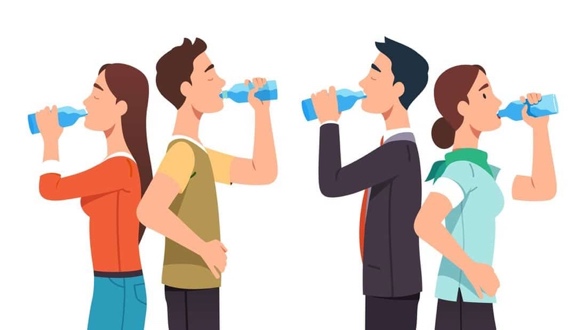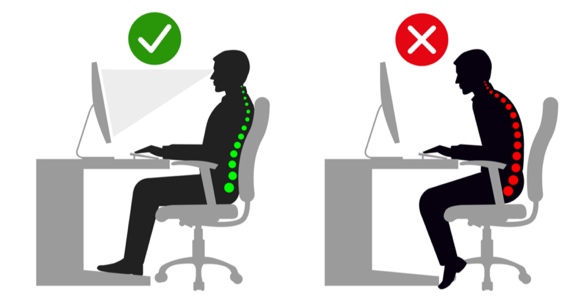Unraveling the Mysteries of Muscle Cramps
Dec 29, 2023 By Nancy Miller
Unexpectedly, muscle cramps may strike and cause discomfort. This article delves into the intricacies of these muscle contractions. It unveils their causes, providing detailed insights not only on effective prevention strategies but also for understanding this common health concern comprehensively. Whether as an athlete, a fitness enthusiast, or even someone grappling with recurring cramps, our aim remains constant. It is to empower you through knowledge that is both comprehensive and actionable towards addressing this issue effectively.
Understanding Muscle Cramps - Causes of Muscle Cramps
Characterized by sudden, intense contractions, muscle cramps often resolve autonomously. Understanding the diverse contributing factors is crucial for their effective management and prevention.
Dehydration and Electrolyte Imbalance:
Inadequate hydration and imbalances in vital electrolytes such as potassium, calcium, and sodium. These factors decisively trigger muscle cramps. When there is a dearth of fluid intake coupled with insufficient mineral supply.
The delicate equilibrium necessary for peak muscle function becomes disrupted. This disruption impedes the standard cycle of muscular contraction and relaxation, thus rendering an alarming susceptibility to cramping.
Overexertion and Fatigue:
Unaccustomed physical activity, overexertion, or muscle fatigue often present as cramps. Intense exercise strains and sensitizes the muscle fibers to spasms. This serves as a protective mechanism indicating the need for rest and recovery in your muscles.
Mitigating the risk of cramping during or after vigorous activities necessitates a crucial understanding, we must comprehend the impact physical exertion has on muscle fibers.
Poor Blood Circulation:
Inadequate blood flow to the muscles can cause muscle cramps. Peripheral artery disease and extended periods of sitting, conditions that compromise circulation, often result in discomfort. If the blood fails to deliver an ample supply of oxygen and nutrients to the muscles, it increases their susceptibility to cramping.
Essential for preventing cramps associated with poor blood circulation is the recognition of the connection between circulatory health and muscle function.
Nerve Compression:
Muscle cramps can potentially be triggered by pinched nerves or compressed nerve pathways. Improper posture and underlying medical conditions that affect nerve function often lead to this compression.
Such factors result in the constriction or compression of nerves. Consequently, disruptions in the signals that regulate muscle contractions may occur, a significant contributor to cramping.
Medication Side Effects:
Diuretics and statins, among other medications, may provoke muscle cramps as a side effect. Thus, understanding the crucial pharmacological connections to cramping is imperative for individuals on specific drug regimens.
Medications have the potential to disrupt muscle function culminating in spasms and discomfort. Healthcare providers offer valuable guidance, exploring alternative medications or complementary approaches that may manage underlying health conditions without incurring the unwanted side effects of muscle cramps.
Awareness regarding risks associated with certain medications empowers individuals. They can then make informed decisions about their treatment plans and take proactive measures to alleviate or even prevent cramps.
Preventing Muscle Cramps
A comprehensive approach that includes hydration, nutrition, and lifestyle choices is crucial for effective prevention. It aims to curtail the occurrence of muscle cramps.
Hydration and Electrolyte Balance:
Maintaining a proper balance of electrolytes is key to preventing muscle cramps.
- Importance of Hydration:
Sustaining electrolyte balance necessitates adequate water intake. Dehydration disrupts the delicate interplay of minerals crucial for muscle contraction and relaxation. Thus, to support optimal hydration to mitigate the risk of cramps, you must ensure consistent consumption of sufficient water throughout each day.

- Electrolyte-Rich Foods:
Your diet's optimal electrolyte levels receive support when you incorporate a variety of nutrient-dense foods. Potassium, calcium, and sodium, all essential electrolytes can be sourced naturally from bananas, leafy greens as well as dairy products.
By including these particular foods in your meals, you actively maintain the necessary equilibrium of electrolytes for smooth muscle function.
Exercise and Recovery Techniques:
Adopting effective exercise and recovery practices plays a crucial role in preventing muscle cramps.
- Warm-Up and Stretching:
Engaging in a proper warm-up and stretching routine before physical activity remains essential. These activities enhance flexibility, and prepare muscles for exercise demands, thus reducing cramp likelihood. Your routine's incorporation of dynamic stretches and targeted warm-up exercises contributes notably to overall muscle health.
- Gradual Intensity Increase:
Muscles adapt and the risk of cramps reduces when one gradually increases exercise intensity. This approach, by its increments, minimizes strain on unaccustomed muscle groups.
Thus, promoting superior overall resilience in all muscles. Whether you start a new fitness regimen or intensify your current one, the key to preventing cramps remains consistent: always pursue gradual progression.
Improving Blood Circulation
Enhancing blood circulation is fundamental in preventing muscle cramps.
- Physical Activity and Circulation:
Regularly engaging in physical activity serves as a cornerstone. It promotes healthy blood circulation. Walking or partaking in other low-impact exercises stimulates blood flow to multiple muscle groups. This action reduces the likelihood of cramps.
When you incorporate these activities into your daily routine, you enhance overall cardiovascular health and diminish the risk associated with poor circulation for developing cramps.
- Ergonomic Practices:
To prevent nerve compression and reduce the risk of cramps, it is crucial to create an ergonomic environment. Significant contributions in preventing cramps can result from simple adjustments such as setting up an ergonomic chair and maintaining a neutral spine position.

Medication Management
Careful management of medications is essential in preventing cramps induced by pharmaceuticals.
- Consultation with Healthcare Providers:
Engaging in discussions with healthcare providers regarding the potential for medication-induced cramps is crucial to their effective prevention. Professionals in health can offer alternatives or tailor medications, thereby reducing side effects. Openly communicating concerns about one's medication ensures a personalized approach to health management and minimizes the risk of experiencing cramps.
- Supplementation:
When you consider supplements like magnesium and vitamin D, it is necessary to consult a healthcare professional. This consultation guarantees an evaluation of your individual needs and circumstances, a critical step towards introducing safe, effective supplementation. By avoiding self-prescription and seeking expert advice, you ensure that your overall health benefits from the positive effects of supplementation without encountering cramp-related side effects.
Conclusion
Conclusively, individuals can effectively manage this common health issue by harnessing a thorough understanding of muscle cramp causes and proactive prevention strategies. They address hydration, nutrition, exercise practices, and potential medication influences. Therefore, taking informed steps toward a life with fewer muscle cramps.







